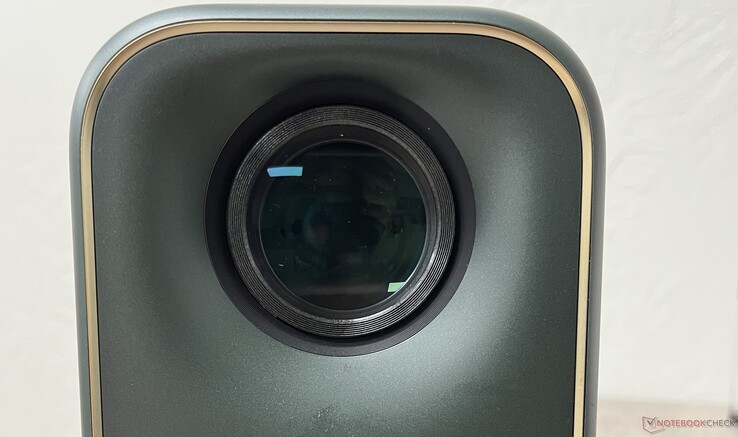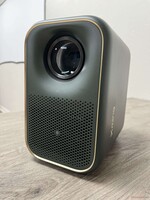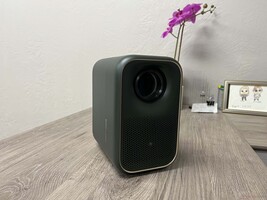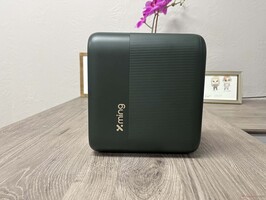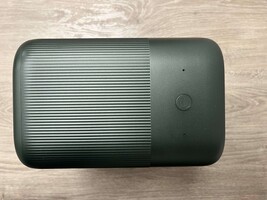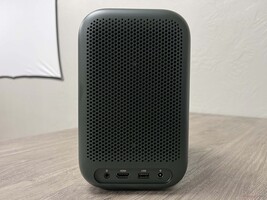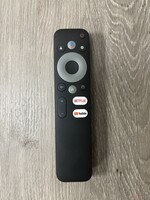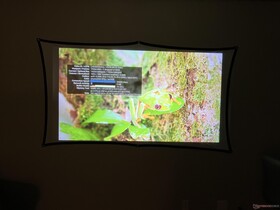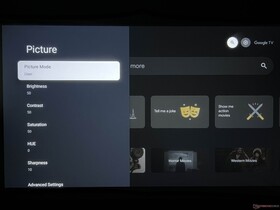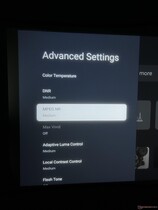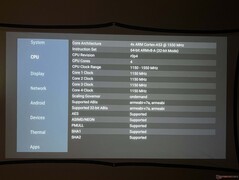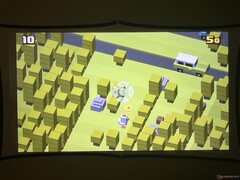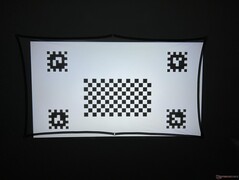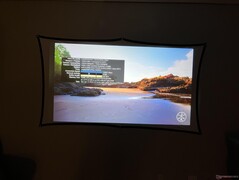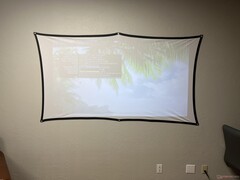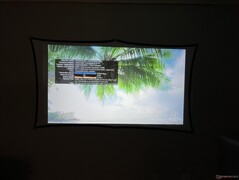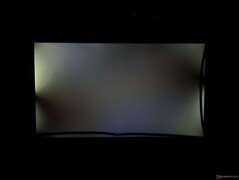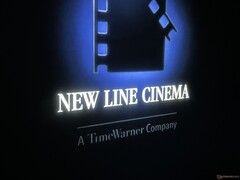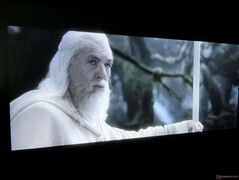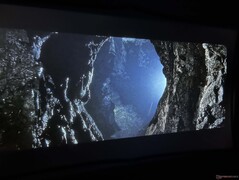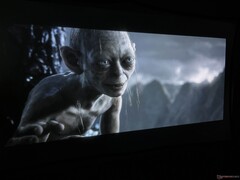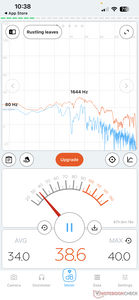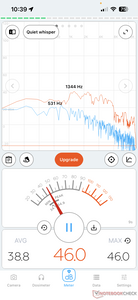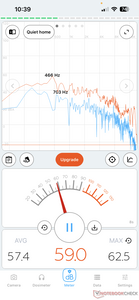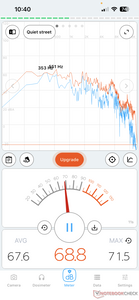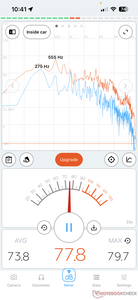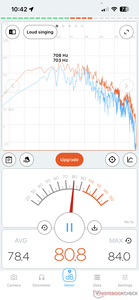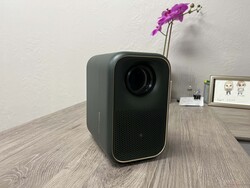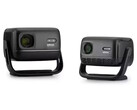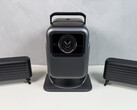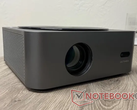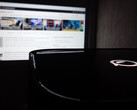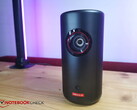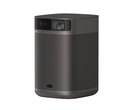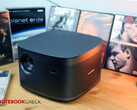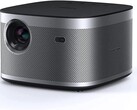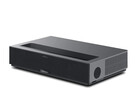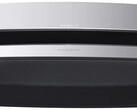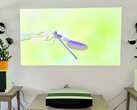Xming Page One projector hands-on: Average projector with some nice features
The home theater market has seen some great devices over the past few years, and more are coming out every month. The latest projector from Formovie (a subbrand under Xiaomi) is the Xming Page One, a tiny home projector that claims to be the "world's first Google TV LCD projector." Interestingly, the Page One uses an LCD projection system instead of the more common DLP chips. The overall package is quite good, but the Page One ultimately does little to stand out in the marketplace.
| Specifications | |
|---|---|
| Maximum Resolution | Full HD (1920x1080) |
| Projection Technique | LCD |
| Image Correction | Auto-focus, auto-keystone, object avoidance |
| Image size | 40-120 inches |
| Operating System | Android TV 11 |
| SoC | 4x Cortex A53 core @ 1.55 GHz, Mali-G52 GPU |
| RAM | 2 GB |
| Storage | 16 GB |
| I/O | 1x HDMI 2.1, 1x USB-A 2.0, 1x 3.5mm audio, DC in |
| Wireless | Wi-fi 2.4/5 GHz |
| Bluetooth | 5.0 |
| Speakers | 2x 5 Watt Dolby |
| Brightness | 300 ANSI Lumens / 500 CVIA Lumens |
| Lamp Life | 20,000 hours |
| Contrast ratio | 2000:1 (per Formovie), HDR10 support |
| Dimensions and weight | 127 x 190 x 210 mm (5 x 7.5 x 8.3 in), 2.1 kg (4.6 lbs) |
Design and Case - Solid plastic in a small footprint
The Xming Page One is fairly compact, coming in at just over 5 liters. Despite its diminutive footprint, the Page One isn't the smallest projector on the block. For example, the Mogo 2 Pro comes in at an impressive 2.07 liters, less than half the volume of the Page One. That isn't to say the Page One is large by any means; on the contrary, it's compact enough to remain unobtrusive.
Build quality is good. The plastic shell feels smooth and robust, and seams are even and tight. The Page One has a good amount of heft to it: it feels dense and sturdy in the hand but isn't heavy enough to trouble a tripod. Mounting the projector to a tripod is a snap thanks to the threaded hole in the middle of the bottom.
The Page One has a simple port layout, including an HDMI 2.1 port, a USB-A 2.0 port, and an audio jack. The projector requires a proprietary DC input, which is standard. However, the inclusion of USB-C power (such as with the Mogo 2 Pro) would be a nice addition.
The included remote is made of plastic but feels good with responsive, clicky buttons. There are dedicated buttons for YouTube and Netflix that work as advertised (provided the apps remain installed), as well as a button for the Google Assistant, which works flawlessly. Unfortunately (like many projectors on the market), all inputs must be made through the remote as the only button on the projector is for power. If you lose the remote, you won't be able to use the projector until you find it or buy a new one.
Overall, the Page One is a nice-looking and well-built mini projector. However, it doesn't stand out amidst the growing sea of compact projectors. We'll see this theme continue with other aspects of the device.
Software and Features - Android TV with stutters
The Xming Page One runs Android TV 11, which boasts plenty of apps for streaming media and playing movies. The Page One has 16 GB of onboard storage, so while users should be able to install a fair number of apps, media should be stored on an external drive. The projector also has 2 GB of RAM. Unfortunately, the navigation experience is noticeably laggy with annoying stutters. Once things get going, inputs are smooth, but loading new apps takes considerable time, and navigating in a new app is jerky for the first minute or so.
Thankfully, the streaming experience is largely smooth. Running the Costa Rica 4K video on YouTube at 1080p/60 fps yielded almost no dropped frames, even from a fresh buffer. Netflix, Disney+, and playing media from a USB drive are equally smooth at Full HD (1920x1080). However, games are not really playable. Even simple titles like Crossy Road have severe stutters and input lag.
The Page One has auto-focus, auto-keystone, and object avoidance technology, allowing the projector to automatically adjust the focus and image alignment. Both the auto-focus and auto-keystone work reliably well, though the process isn't as smooth as other projectors (i.e., the keystone snaps into place over a single frame instead of through a smooth scaling animation). The image adjustment motor is also audible while the projector focuses, though this process should be a "one and done" experience at start-up.
While the Page One has some nice included features, it falls behind competitors like the Mogo 2 Pro, which has ISA 2.0 auto-focus (which focuses the image without interrupting it), USB-C power, and an eye protection feature that dims the lamp if someone walks in front of the projector.
Picture and Sound - Crisp images with muted sound
While solid software can improve a projector, it's nothing if the image quality is subpar. Thankfully, the Xming Page One spits out great visuals. The lamp is rated at 500 CVIA lumens, or 300 ANSI lumens. The result is a bright image that looks great in a darkened room. However, the lamp isn't bright enough for the projected image to be visible when lights are on.
The image is crisp with no visible macroblocking or black crush, which is a problem with similarly-priced projectors (such as the Mogo 2 Pro). At full brightness, though, whites and highlights get blown out, resulting in smudged or blurred boundaries in brighter areas. On the plus side, since the Page One uses an LCD for projection, there is no visible color banding or rainbowing that is sometimes present with the more common DLP projection method.
Curiously, there is a fair amount of "backlight bleed," which shows as bright spots along the edge of the image. There is also a notice black box around the image if it is scaled due to keystone image, revealing the remnant of the true projected image.
Sound-wise, the Page One offers dual 5 Watt speakers with support for Dolby Audio. The speakers can hit high volumes, peaking at about 84 dB(A) (measured four feet from the projector). Sound remains clear with no noticeable distortion. While highs and mids remain clear and fairly balanced, bass is somewhat anemic, resulting in an overall thin sound profile. Big booms and thumps in action scenes lack the punch provided in larger projectors, but the speakers have enough overall body that it isn't a dealbreaker.
The projector's fan is quiet, but it never stops spinning. This creates a consistent sound profile that blends in once a movie gets going, but you'll hear the fan in silent scenes.
Pros
+ clear Full HD image
+ Netflix-certified out-of-the-box
+ smooth streaming
+ Android TV 11
+ auto-focus and auto-keystone
Cons
– poor speaker placement, muddy sound
– backlight doesn't get very bright
– stuttery UI experience
Conclusion - Compact 1080p projector without any major highlights
Overall, there isn't too much to say about the Xming Page One LCD projector. This is a double-edged sword; on the one hand, the projector has no glaring faults or dealbreakers, but on the other, there is nothing the Page One does that stands out when compared to other small projectors. There are more compact projectors with brighter lamps and more/better features. The chief competitor that I've looked at is the Xgimi Mogo 2 Pro, which is smaller, brighter, has the same features as the Page One, offers a smoother experience, and runs on USB-C power instead of a dedicated plug. However, the Mogo 2 Pro is $100 more expensive than the Page One, coming in at $599 compared to the Page One's $499 price tag.
For a dollar under $500, the Xming Page One offers a solid projector experience in a compact, well-built case with enough features and power to make for an enjoyable streaming experience.
There are some improvements to be made. The primary downside of the Xming is its overall brightness. A brighter lamp would be a very nice improvement. Formovie states the Page One supports HDR content, and while it can process HDR content, the effect is largely lost because the lamp can't get bright enough. The position of the speakers is also problematic as sound is blasted away from the viewers. Side- or front-directed drivers would greatly improve the speakers, which aren't bad on their own but suffer from the poor positioning.
There are better options for slightly more money out there. I'd recommend the Xming Page One projector for those that want a smaller home projector for movie nights, but I'd also recommend considering the other projectors on the market, particularly the Xgimi Mogo 2 Pro. You can't really go wrong with either.
Price and availability
The Xming Page One projector is available from Formovie's website for $499.
Transparency
The selection of devices to be reviewed is made by our editorial team. The test sample was provided to the author as a loan by the manufacturer or retailer for the purpose of this review. The lender had no influence on this review, nor did the manufacturer receive a copy of this review before publication. There was no obligation to publish this review. As an independent media company, Notebookcheck is not subjected to the authority of manufacturers, retailers or publishers.
This is how Notebookcheck is testing
Every year, Notebookcheck independently reviews hundreds of laptops and smartphones using standardized procedures to ensure that all results are comparable. We have continuously developed our test methods for around 20 years and set industry standards in the process. In our test labs, high-quality measuring equipment is utilized by experienced technicians and editors. These tests involve a multi-stage validation process. Our complex rating system is based on hundreds of well-founded measurements and benchmarks, which maintains objectivity. Further information on our test methods can be found here.




